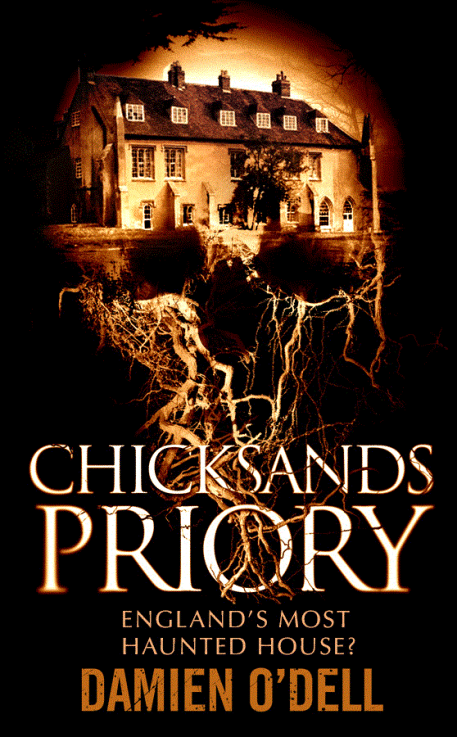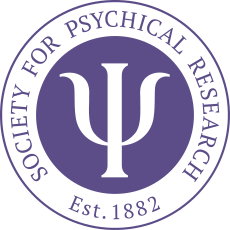
Reviewed by Ciaran Farrell
Damien O’Dell is the author of a number of books on the paranormal, including Paranormal Bedfordshire, Paranormal Cambridge, and Paranormal Hertfordshire. His latest book is about the Chicksands Priory and whether it is truly England’s most haunted house. In order to answer the question, he has set out a detailed history of the Priory from when it was first built, to the present day, including the investigations carried out by the SPR, The Ghost Club and his own and other organisations.
He has included a very large number of reported paranormal experiences from people who have lived, worked and visited the Priory, which at one-time was the home of the Gilbertine order, the Osborn family residence, and a top-secret military base from 1936 to the present day. The book basically provides a complete a record of what is known about the history of the order, the Priory, and the Osborn family’s ownership of it. The various reported ghostly sightings and paranormal activity that has occurred over the years and down the generations have been integrated in the appropriate historical chapters. There are also chapters and appendices which are devoted to the paranormal investigations of the Priory.
Damien is able to speak from a well-grounded and informed perspective about the paranormal. He is a paranormal investigator himself, and founded the Anglia Paranormal Investigation Society (APIS). He is a highly accomplished public speaker on the paranormal and has led teams investigating various haunted locations across the UK. Damien is a member of the Ghost Club too. His knowledge, experience and expertise extends beyond using modern instrumental methods to carrying out a paranormal investigation as his maternal grandmother, Rose Tobin, was a well-known and respected psychic medium. He therefore values what mediums and psychics can bring to the table during an investigation.
He has included a number of reports which he refers to in the appropriate chapters as well as a series of appendices covering an analysis of the reported paranormal phenomena. There are in addition, a list of witnesses to these anomalous phenomena, and also a very useful timeline of the history of the Priory. There are, in addition to this, a series of detailed floor plans to aid the reader’s understanding and appreciation of the various anomalous phenomena which he discusses located at the front of the book. Furthermore, there is a thoughtfully composed list of books for further reading as well as a detailed index to the book for quick and easy reference.
In addition to all this, there are a series of colour and black-and-white photographs of various key locations within the Priory which include some of the investigators. Relevant photographs, diagrams and background material are included in the various investigation reports contained within the appendices.
Damien describes in the opening chapter of his book, The Secrets of Chicksands, how he came to be involved with the Priory and why he made it a personal mission to investigate the paranormal activity within the Priory and its grounds. He continues this theme in the book’s second chapter, The Adventure Begins, which leads on to an investigation by his own organisation in chapter 3, APIS investigates. The Spooks Reveal Themselves. The fourth chapter, The Ghost Club Society Investigates, continues with the theme of directly reporting and commenting upon two of the most important and extensive investigations of the Priory.
In the next series of chapters, starting with chapter 5, Mediaeval Monastery (1150-1538), he starts to describe, in detail, the history of the Priory which was mentioned in the Domesday Book due to a dispute about the land. This led to Hugh de Beauchamp’s claim being upheld, and his grandson, Payne de Beauchamp, acquiesced to his wife, Rohese’s wishes that one of the two Chicksands manors be given over to the nuns and canons of the uniquely English monastic order of St Gilbert so they could build a religious house on the site. Damien points out that the meaning of the name Chicksands is uncertain and may derive from a connotation of ‘secluded’ or possibly to a Saxon landowner by name of ‘Cicca’. The ‘sands’ in the name is thought to be a reference to the sandy soil of the location. The Gilbertines consisted of four separate orders, nuns, lay sisters, canons and lay brothers. Damien makes the point that women were of ‘superior account’ within the Priory whereby male canons and their chaplains acted as stewards to the women of the other orders.
Damien continues with his detailed history of the Priory in the next three chapters, chapter 6 Osborn Family Home (1576-1654), chapter 7, The Osborn Dynasty Established (1654-1753), chapter 8, General Sir George Osborn, 4th Baronet, and finally chapter 9, Last of The Osborns at Chicksands (1818-1936). In these chapters he describes the stewardship of the Priory by the family who appear to have suffered more than their fair share of bad luck and adversity to the extent that the family might even be cursed, and if so, how that curse may have followed the family down the generations. This includes tales of star-crossed lovers, and the family’s special role in supporting King Charles I during a civil war which helped establish the Osborn dynasty as a result of Sir Peter Osborn’s defence of Castle Cornet on the Isle of Guernsey.
In chapters, 10, 11 and 12 he sets out a detailed history of Chicksands as a military base. Chapter 10, Chicksands: Royal Air Force (1939-1961), deals with the the Royal Air Force’s acquisition of the Priory and the crucial role it played in British secret service operations complementing the work of the codebreakers at Bletchley Park.
In chapter 11, Uncle Sam at Chicksands, and chapter 12, More Uncle Sam at Chicksands, he details the American military’s collaboration with the British military and the use of Chicksands as an American secret service base. These two chapters span the years 1950 to 1970, and 1970 to 1995.
In chapter 13, Still the ‘Most Haunted House’ in the Twenty-first Century, Damien details the withdrawal of the American forces from their secret communications base and the re-establishment of Chicksands as a top-secret British communications base and training centre. In 1995, the decision was taken to open up the base to the public by way of guided tours of the Priory in association with the Friends of Chicksands. In this chapter Damien reflects upon the many anomalous and paranormal experiences that have occurred during the most modern period of the Priory’s history and places them in their historical context.
In the penultimate chapter of his book, chapter 14, The Psychic’s Perspective, Damien gives a detailed account of the investigations of the Priory undertaken by Rose Gladden, in particular. She was one of the most famous healers and psychic mediums of the 1970s and 80s. He compares her reports, experiences and perceptions, with documentary evidence and expert testimony which is not only interesting and incisive, he finds her to have been strikingly accurate as well.
In the final chapter of Damien’s book, chapter 15, A ‘Ghostly’ Tour of Chicksands Priory, he provides us with a unique pen portrait of a paranormal or ghost tour of the Priory in which he brings together all the anomalous experiences in the different rooms and locations within the building that have been witnessed or experienced over the years.
Damien’s book on the Chicksands priory is written in an open, informal modern style with a reflective and analytical quality. The book offers a unique blend of the paranormal history and chronology of the Priory and its grounds. It is in my view a good, comprehensive and comfortable book to read for the psychical researcher, and also those with a keen interest in history.
I would recommend this book on the basis of the quality of the historical writing and research that went into it, and perhaps more importantly, the detailed paranormal history it contains, and especially because of Damien’s comment and analysis on the various field investigations that have taken place at the Priory.
In answer to the question posed in the title of the book about Chicksands being England’s most haunted house, Damien has wisely left it open for the reader to decide, and so will I. Therefore, in order to assess the evidence and consider the arguments Damien puts forward, and consequently answer the question for yourself, I would indeed recommend reading his book.

